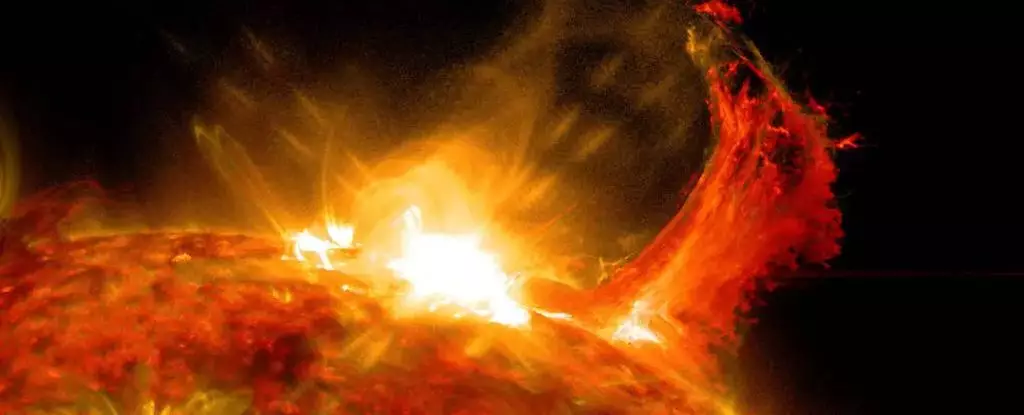For many, the Sun embodies a sense of permanence and stability, gracing our skies daily with its light and warmth. However, a closer examination reveals a chaotic and dynamic entity, a swirling mass of plasma that constantly changes under the influence of its own complex magnetic field. This ongoing activity presents both a scientific challenge and an opportunity for understanding the Sun’s behavior, particularly concerning its more explosive incidents, such as coronal mass ejections (CMEs). These unpredictable phenomena expose the limitations of human prediction and underline the need for more sophisticated forecasting methods.
CMEs are colossal outbursts of solar plasma caused by the reorganization of magnetic fields near the Sun’s surface. When these magnetic lines reconnect and realign, they can erupt explosively, sending large quantities of charged particles into space. These ejections can travel at astonishing velocities, sometimes reaching Earth in just days, depending on their trajectory. Upon arrival, CMEs can stir up geomagnetic storms, capable of wreaking havoc on modern technology—disrupting satellite communications, GPS functionalities, and even causing power grid failures. The ability to anticipate these events is not merely an academic pursuit but a practical necessity in our increasingly tech-dependent lives.
A recent study spearheaded by astronomers from the University of Genoa, including Sabrina Guastavino, showcased the potential of artificial intelligence to enhance our understanding of solar activity. This research utilized machine learning algorithms trained on decades of solar data, helping to identify patterns that traditional methods have failed to unveil effectively. In particular, the researchers focused on forecasting events associated with the explosive solar storm of May 2024, examining flares from a specific sunspot designated AR13664 and the CMEs that followed.
The application of machine learning provided a fresh lens through which scientists could interpret an enormous amount of solar data. By seeking out previously hidden correlations, the AI technology demonstrated its predictive prowess regarding the occurrence and evolution of solar flares and associated CMEs. The study revealed immense potential in risk reduction related to solar events, providing not only precise predictions but also minimizing uncertainty compared to conventional forecasting methodologies.
Measuring the Impact of Predictive Success
The data gleaned from the May 2024 event showed remarkable accuracy in predicting CME travel times and subsequent geomagnetic storm onset. Such precise forecasting holds critical importance for numerous sectors including telecommunications, aviation, and even energy production. Regular and sudden fluctuations in solar activity can lead to significant challenges for global infrastructure. The predictive capabilities provided by AI stand to substantially mitigate these risks, allowing for more robust strategies to safeguard technological systems.
Moreover, accurate predictions could enrich the experience of sky watchers eager to witness the beauty of auroras. By effectively forecasting when and where these light displays are most likely to occur, AI could maximize public viewing opportunities and deepen our appreciation for this natural wonder.
The implications of utilizing AI in solar physics are profound and far-reaching. As we continue to unveil the intricacies of our nearest star, the integration of advanced computational techniques will remain paramount in overcoming the limitations of traditional observation and prediction methods. To harness the full potential of AI, our focus must shift towards continuously refining algorithms and expanding data repositories, ensuring the solar physics community can sustain the momentum gained from recent breakthroughs.
The Sun may seem constant from a distance, but its chaotic nature invites closer scrutiny and advanced technological approaches for meaningful insight. The marriage of machine learning with solar physics may very well be the key to turning unpredictability into informed awareness, transforming how we understand and respond to solar dynamism in a world increasingly reliant on technology. As our tools evolve, so too will our capacity to navigate the challenges posed by one of nature’s most powerful forces.

